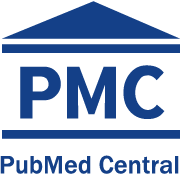Trend and factors associated with the frequency of tooth brushing in children under twelve years old, Peru 2013-2018
DOI:
https://doi.org/10.17843/rpmesp.2019.364.4888Keywords:
Toothbrushing, Health Surveys, Epidemiologic Factors, Oral HygieneAbstract
Objetivos. To determine the trend and factors associated with brushing two or more times per day in children under twelve years of age between 2013 and 2018 in Peru. Materials and Methods. A cross-sectional study was conducted by secondary analysis of data reported by the Demographic and Family Health Survey (ENDES). Information on children with at least one brushing per day was taken into account, considering as an "Adequate Toothbrushing Frequency" (ATF) for those who reported brushing two to more times per day. Percentage measures were generated by geographical area, health, housing, and household characteristics. Factors associated with an ATF were determined by using binary logistic regression for complex surveys, trend variability was identified by joinpoint regression with a 95% confidence. Results. In 2013, the ATF was 79.0%, increasing to 83.9% by 2018. Four out of 25 geographic areas were identified as having no variation on the ATF, and four others decreased. All sanitary characteristics showed favoring brushing, emphasizing that not sharing the toothbrush generated a 2.30 OR, 95% CI: 1.46 to 3.60. The natural region, type of place of residence, and wealth index quintile affected the ATF. The ATF was higher as the age group increased. Conclusions. The percentage of ATF has increased in recent years, being favorably influenced by health aspects; in rural areas, this percentage is significantly lower, something that is also evident in the Highland region.Downloads
Download data is not yet available.
Published
2019-12-03
Issue
Section
Original Article
License
Copyright (c) 2019 Revista Peruana de Medicina Experimental y Salud Pública

This work is licensed under a Creative Commons Attribution 4.0 International License.
How to Cite
1.
Solis G, Pesaressi E, Mormontoy W. Trend and factors associated with the frequency of tooth brushing in children under twelve years old, Peru 2013-2018. Rev Peru Med Exp Salud Publica [Internet]. 2019 Dec. 3 [cited 2025 May 11];36(4):562-72. Available from: https://rpmesp.ins.gob.pe/index.php/rpmesp/article/view/4888




























